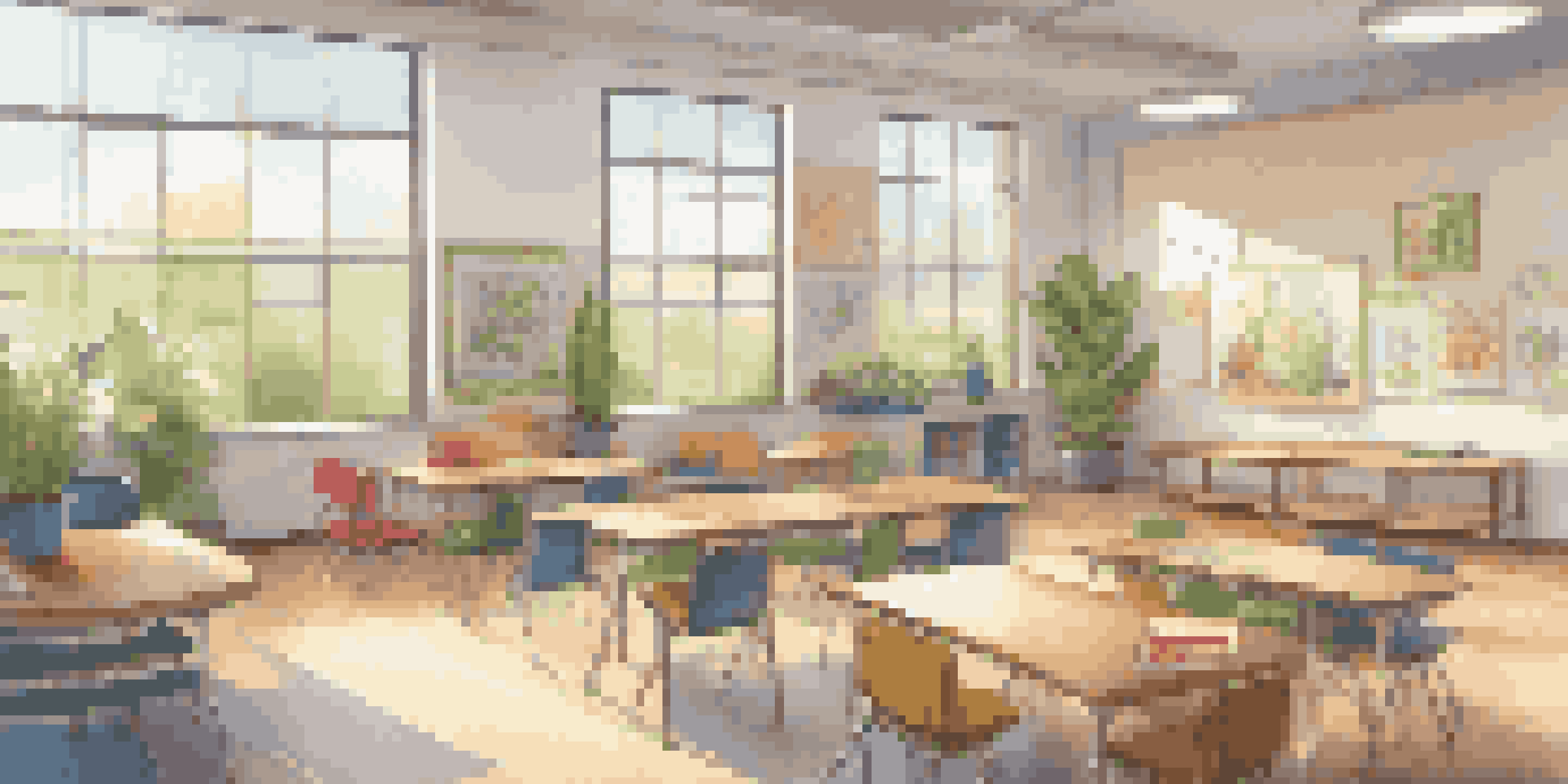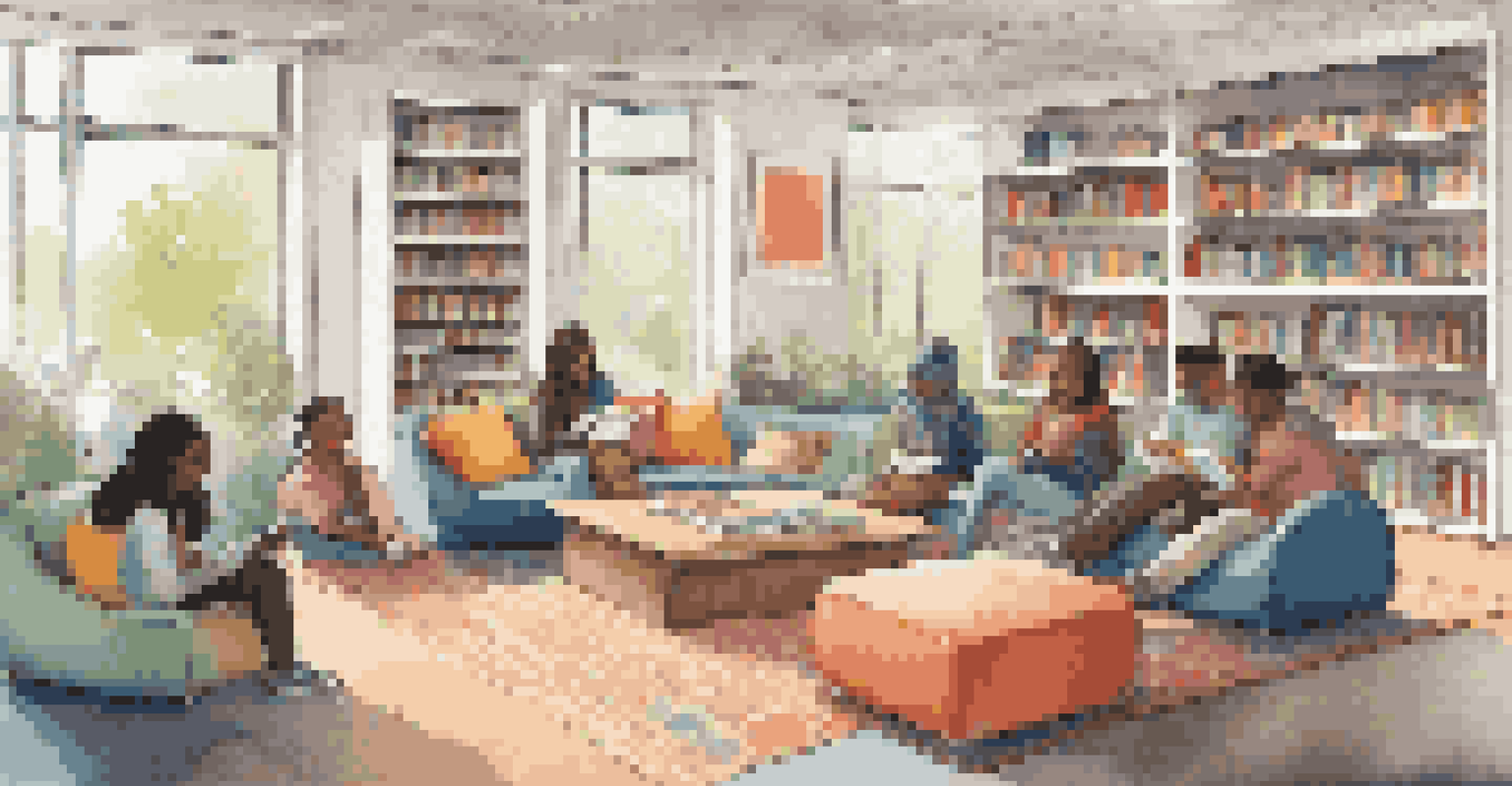Creating a Sense of Place in Learning Environments

Understanding the Importance of Place in Learning
Creating a sense of place in learning environments is vital for fostering engagement. When students feel connected to their surroundings, they are more likely to participate actively in their education. This connection can transform a mundane classroom into a vibrant space that inspires curiosity and collaboration.
The environment in which we learn is as important as the content we learn.
For example, consider a classroom designed with natural elements like plants and sunlight. These features can evoke feelings of calmness and focus, enhancing the learning experience. A well-thought-out environment encourages students to explore and interact with their peers and the material at hand.
Moreover, a sense of place goes beyond aesthetics; it encompasses the emotional and psychological ties that students develop with their learning spaces. By creating environments that reflect the community and students' identities, educators can foster a deeper sense of belonging.
Creating Spaces That Reflect Community Values
One effective way to create a sense of place is by incorporating local culture and history into learning environments. This could mean displaying artwork by local artists or using materials that resonate with the community's heritage. When students see aspects of their own lives reflected in their surroundings, it helps them feel valued and understood.

For instance, a school in a coastal area might incorporate marine-themed decor and lessons that tie into local environmental issues. This not only enriches the curriculum but also strengthens students' connections to their community. They learn to appreciate their environment while developing a sense of pride in their local culture.
Engaging Spaces Boost Learning
Creating environments that reflect students' identities and local culture enhances their engagement and connection to learning.
Involving students in the design process can also enhance this sense of ownership. When learners contribute ideas about what their environment should look like, it creates a personal stake in the space, further deepening their connection.
Utilizing Flexible Spaces for Diverse Learning Styles
Flexible learning spaces accommodate various teaching methods and learning styles, essential for fostering a sense of place. When students can choose where and how they learn, they are more likely to engage with the material. This adaptability supports collaborative projects, quiet study times, or hands-on activities.
Education is not the filling of a pail, but the lighting of a fire.
For example, a classroom that features movable furniture allows students to rearrange their environment based on group work or individual tasks. This flexibility not only empowers students but also encourages them to take ownership of their learning process. They become active participants rather than passive recipients of information.
Additionally, incorporating technology into these flexible spaces can enhance learning experiences. Interactive screens and digital resources can make lessons more dynamic, further promoting a sense of place that feels relevant to today's learners.
Incorporating Nature to Enhance Learning Environments
Integrating natural elements into learning spaces can significantly impact students' well-being and academic performance. Studies show that exposure to nature can reduce stress and improve focus, making it an excellent addition to any educational setting. This could include anything from windows that let in natural light to outdoor classrooms.
Imagine a school with a garden where students can learn about biology firsthand. This hands-on experience not only enriches their understanding of the subject but also fosters a deeper connection to the environment. Students learn to appreciate the world around them, which can spark a lifelong passion for nature and science.
Flexibility Supports Diverse Learning
Flexible learning spaces allow students to choose their learning methods, fostering ownership and active participation.
Furthermore, outdoor learning experiences can break the monotony of traditional classrooms. When students engage with their environment, they develop a sense of place that is dynamic and ever-changing, keeping their enthusiasm for learning alive.
Fostering Collaboration Through Shared Spaces
Shared spaces are essential for fostering collaboration and building a sense of community among students. When learners have access to communal areas, they have more opportunities to interact, share ideas, and work together on projects. This collaborative spirit enhances their educational experience and creates a vibrant learning atmosphere.
For instance, a school library designed as a multipurpose space encourages group study and social interaction. By breaking down the barriers of traditional classrooms, students can engage in discussions and collaborative work, enhancing their learning outcomes. These shared experiences contribute to a stronger sense of belonging.
Moreover, these collaborative environments can help students develop essential social skills. As they navigate group dynamics, they learn to communicate effectively and respect diverse perspectives, which are invaluable skills for their future.
Personalizing Learning Spaces for Individual Growth
Personalizing learning spaces allows students to express their identities and preferences, which is crucial for developing a sense of place. When students can display their work or choose decor that reflects their interests, they feel more connected to their environment. This personal investment can lead to increased motivation and pride in their learning.
For example, a bulletin board where students can showcase their projects or achievements creates a sense of ownership. This not only empowers learners but also fosters a supportive community where students celebrate each other's successes. It becomes a space that reflects the collective efforts and identities of the class.
Collaboration Builds Community
Shared spaces promote collaboration among students, enhancing their learning experiences and social skills.
Additionally, educators can encourage students to take part in setting up their learning environments. Whether it’s choosing seating arrangements or selecting themes for projects, this involvement can deepen their connection to the space and enhance their overall learning experience.
Emphasizing Safety and Comfort in Learning Environments
A sense of safety and comfort is fundamental to creating an effective learning environment. When students feel secure in their surroundings, they are more likely to take risks, express themselves, and engage in the learning process. This emotional safety can be cultivated through thoughtful design and supportive practices.
For instance, incorporating cozy seating areas can encourage relaxation and informal discussions, making the environment feel more welcoming. When students can settle into a comfortable space, they are more likely to open up and share their thoughts, which can enrich classroom discussions.

Moreover, ensuring that learning spaces are accessible to all students fosters inclusivity. When everyone can navigate and utilize the space effectively, it creates a sense of belonging and respect, further enhancing the overall learning experience.